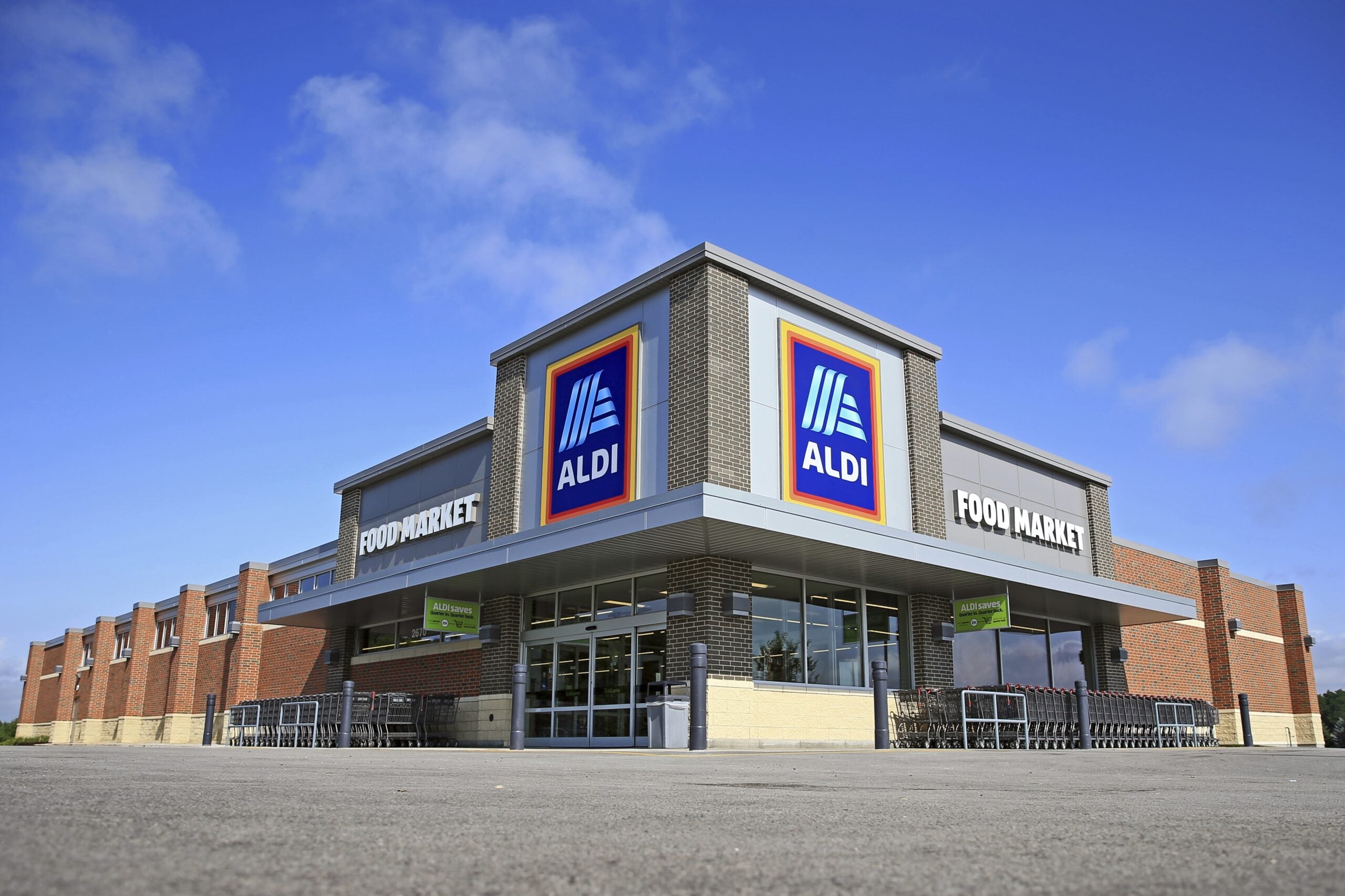With its small stores, simple displays and minimal brand offerings, Aldi is rising to the top of the pack as a fierce competitor in the grocery industry.
With plans to bring its total number of stores to 2,500 in the next four years, remodel current stores and upgrade its fresh produce section, the German company is on track to become the third largest grocer in the country by number of stores. Aldi currently has 1,800 stores in 35 states across the United States.
“They are clearly distinguished from the rest of the pack,” said Hart Posen, an associate professor of management at the University of Wisconsin-Madison School of Business.
News with a little more humanity
WPR’s “Wisconsin Today” newsletter keeps you connected to the state you love without feeling overwhelmed. No paywall. No agenda. No corporate filter.
Smaller than a traditional grocery store, Aldi displays its product in boxes or on pallets. Instead of numerous brand options for each product, Aldi sells private-label products tested in its own labs, and carries a fraction of the items found in larger supermarkets. The stores’ cashiers move quickly and customers are required to pack up their own groceries.
Aldi’s business model of discounted products — which has effectively vaulted them to No. 9 in Progressive Grocer’s rankings of year-end sales — has set them apart from other grocery stores, whose inability to compete with their rivals ends up being their downfall, Posen said.
“Aldi’s point is, ‘There are some consumers who are not for us,’” he said. “But if you want very low prices, you’re willing to sacrifice the name brands for our private-label brands, you’re willing to do away with any frills, we’re for you.”
German brothers Karl and Theo Albrecht took over their family grocery store in Essen, Germany in 1946, giving birth to Aldi. After a falling out between the brothers in 1960 over whether to sell cigarettes, the company split into Aldi Nord and Aldi Sud. Aldi U.S. is part of Aldi Sud, and made its first appearance in the U.S. in 1976.
Despite its discounted prices, Posen said Aldi markets to the middle class, members of whom are looking for a simpler shopping experience.
Because of its cost-effective model, Aldi has been able to expand to areas where traditional grocery chains have failed. But Posen said Aldi isn’t solely relying on its discounted model to keep pace with the industry. The company capitalized on the organics market by announcing in August it would expand its selection of fresh and organic options by 40 percent.
For an added benefit, Aldi sells chocolate previously found only in Germany, Posen said.
“There are little jewels in there,” he said.
Wisconsin Public Radio, © Copyright 2025, Board of Regents of the University of Wisconsin System and Wisconsin Educational Communications Board.







